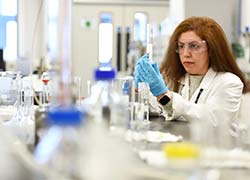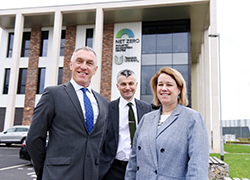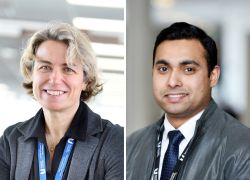How we built the Angel
When Anish Kapoor’s Temenos is inaugurated in Middlesbrough in a few month’s time, the example of Anthony Gormley’s Angel of the North will certainly be in everyone’s minds.
It seemed entirely appropriate therefore that this series of lectures on public art which has been programmed to coincide with the arrival of Kapoor’s giant sculpture should begin with a telling of the Angel story.
And who better to give us the insider’s view than Anna Pepperall and Mike White, officials on Gateshead Council in the 1990s, charged with seeing the Angel project through to successful conclusion?
Review of Anna Pepperall and Mike White’s lecture, ‘How we built the Angel’, School of Arts and Media, Teesside University.
The story they told is indeed extraordinary, miraculous even. Seven years in gestation, six months in construction, pushed through by an indomitable little band of councillors in spite of the artist’s initial reservations (‘I don’t do roundabout sculpture’) and in the face of sometimes hysterical press hostility, Gormley’s winged colossus suddenly became – and perhaps more amazingly has remained – apparently loved and cherished by all.
As Pepperall showed, the British press has never been able to get enough of it. No wonder cities up and down the country persist in trying to follow Gateshead’s example.
Wonderful anecdotes Pepperall and White had some wonderful anecdotes. For instance, we heard how when White and a group of Gateshead officials were driving back from the launch of Middlesbrough’s Bottle of Notes in 1993 (five years before the Angel went up) they resolved then and there that whatever kind of artwork they themselves erected it had to be bigger.
And there was the lovely story of how, just before the statue actually went up, the Gateshead Council press office declared that the business of bringing it up the A1 from Hartlepool on giant lorries and hoisting it into place in the early hours of 16 February 1998 would not be a media event. How wrong they were! As many of us remember, the world’s press and over 20 TV news crews were all there.
Also, Pepperall and White made a delightful double-act, something which seemed in a way to exemplify the collaborative spirit which, we were told, characterised work on the Angel at the time.
Needless to say, the speakers tended to skip over what it is about a statue of a winged figure, the site, perceptions of the North or anything else that might have caused the project to work out as it did. Nor were they inclined to consider whether this type of culture-led urban regeneration is in fact the complete blessing it so often is made out to be.
At one point, for instance, they juxtaposed, but hardly commented on, two images of the Gateshead riverside taken before and after the Angel appeared: a remarkable photograph from the 1920s of almost medieval-looking slums on the Gateshead bank of the Tyne and an aerial view of the same area as it is today with the Sage, Baltic, Hilton Hotel and Millennium Bridge all in place. And indeed this did seem to imply that the Angel had triggered a chain of events which has brought about one of the most remarkable transformations of any urban environment in Britain in recent times. However, it’s worth perhaps asking who actually benefited and how?
But no matter. Such issues are for another occasion. This lecture was a celebration and the eagerness with which I and other members of the audience rushed up afterwards to pick up the Angel postcards that Pepperral and White had brought along with them seemed to suggest that this is exactly what most of us wanted.
by Paul Usherwood, critic and art historian and author of Public Sculpture of North-East England 2000
 Supporting Nigerian farmers by transforming food waste into
...
Supporting Nigerian farmers by transforming food waste into
... International partnership signed with prestigious American
...
International partnership signed with prestigious American
... Teesside University academics join prestigious network of
...
Teesside University academics join prestigious network of
...